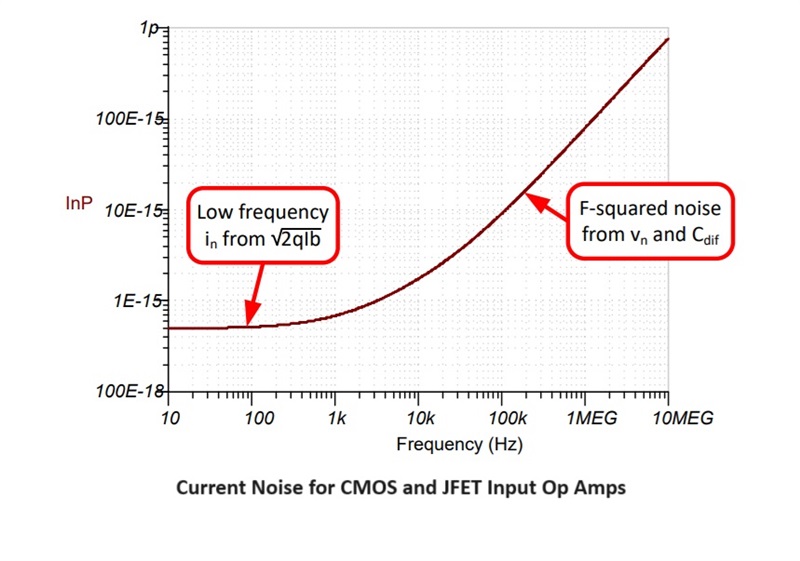Tool/software:
Hello,
We are working on a very sensitive amplifier to interface with a high impedance sensor.
I discovered that the datasheet and the simulation model doesn't include the current 1/f noise.
We need to make sure that the 1/f current noise doesn't cause issues in our application. Is there any test data on 1/f current noise?
Thanks!


